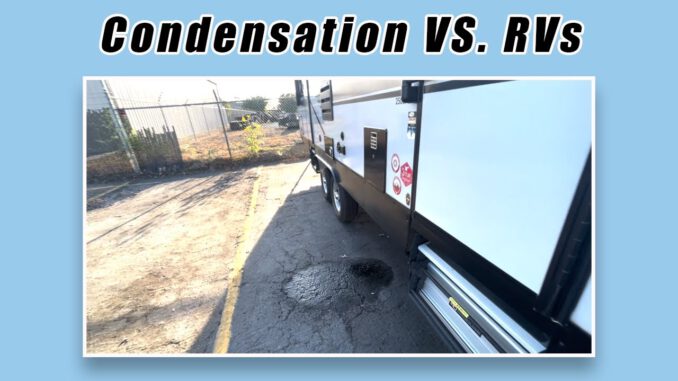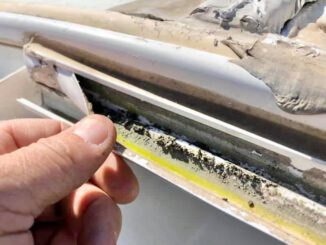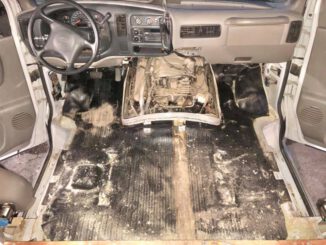
Join Dustin “In The RV Shop” as he talks about how condensation can lead to various issues in RVs, affecting both the roof and the body. Watch this video to learn about potential problems associated with condensation and ways to mitigate damage.
Condensation on RV roofs
Roof damage
Prolonged exposure to condensation can contribute to the deterioration of the roof material. This is particularly true if the roof is made of materials like wood or if there are seams and joints where water can penetrate.

Mold and mildew growth
Excess moisture from condensation provides an ideal environment for mold and mildew growth. This not only damages the roof material but can also lead to health issues and unpleasant odors inside the RV.
Insulation compromise
If the insulation in the roof becomes saturated with moisture due to condensation, it can compromise its effectiveness. Wet insulation is less efficient in providing thermal protection.
Condensation on RV body
Corrosion
Metal components on the RV body, such as the frame or other structural elements, are susceptible to corrosion if exposed to condensation over time. This can weaken the structure and compromise safety.
Wood damage
If the RV body has wooden components, constant exposure to condensation can lead to wood rot. This is a serious issue that can affect the structural integrity of the RV.

Interior damage
Condensation on the RV body can also lead to water infiltration into the interior. This may damage walls, ceilings, and other internal components.

Proper ventilation
Ensure adequate ventilation throughout the RV, especially in areas prone to condensation. Use roof vents, exhaust fans, and open windows to promote air circulation.
Insulation improvement
Upgrade the insulation in the RV to reduce temperature differentials that contribute to condensation. This is particularly important in areas with cold climates.
Use dehumidifiers
Portable dehumidifiers can help control humidity levels inside the RV, reducing the likelihood of condensation.
Regular maintenance
Inspect the roof and body regularly for signs of damage, leaks, or condensation. Address any issues promptly to prevent further damage.
Seal leaks
Ensure that all seams, joints, and roof penetrations are properly sealed to prevent water ingress. Regularly check and reseal as necessary.
Install roof vent covers
Adding vent covers can allow you to keep roof vents open even during inclement weather, promoting better air circulation.
Use moisture-absorbing products
Place moisture-absorbing products or desiccants in areas prone to condensation, such as closets and cabinets.
Protective coatings
Apply protective coatings to the roof and body to enhance water resistance. This includes roof coatings and sealants suitable for your RV’s materials.
By addressing condensation issues promptly and implementing preventive measures, you can minimize the risk of damage to both the roof and body of your RV. Regular maintenance and vigilance are key to preserving the integrity of your recreational vehicle.
More from Dustin
Make sure you check out my website, California RV Specialists, and our YouTube channel for more helpful information, and see our published articles on RVtravel.com and other social media pages.


